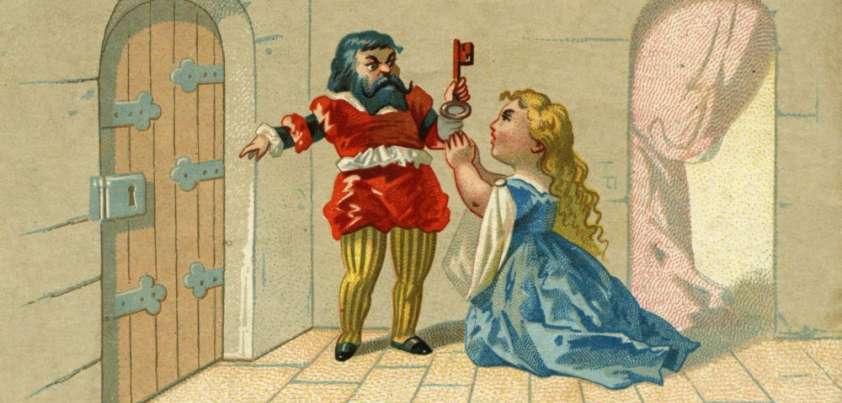 As in real life, many folktales have protagonists who attain riches and/or happiness by questionable means. Bluebeard, Charles Perrault’s serial killing nobleman, obviously deserves his fate. However, it is also hard to see how his last wife, who first rejected him based on his looks, seemingly only married him for his riches, and then betrayed his generosity and trust by entering a forbidden room, deserves a “happily ever after” future. Themes include judging by appearances, greed, vanity, betrayal of trust and justice. One question remains: if the beard made women and girls run away, why didn’t Bluebeard shave it off?
As in real life, many folktales have protagonists who attain riches and/or happiness by questionable means. Bluebeard, Charles Perrault’s serial killing nobleman, obviously deserves his fate. However, it is also hard to see how his last wife, who first rejected him based on his looks, seemingly only married him for his riches, and then betrayed his generosity and trust by entering a forbidden room, deserves a “happily ever after” future. Themes include judging by appearances, greed, vanity, betrayal of trust and justice. One question remains: if the beard made women and girls run away, why didn’t Bluebeard shave it off?
Original Text / PDF / Audio (1,850 words)
General Comments
Our source for Bluebeard was an English version of the Perrault story published in The Blue Fairy Book, one of a series of twelve collections of folk and fairy tales for children edited by Andrew Lang. This is the first book in the series, and was first published in 1889. The book contains translations of seven Perrault stories, but omits an important aspect of each: Perrault’s morals. For Bluebeard, these are:
Moral 1: Curiosity, in spite of its appeal, often leads to deep regret. To the displeasure of many a maiden, its enjoyment is short lived. Once satisfied, it ceases to exist, and always costs dearly.
Moral 2: Apply logic to this grim story, and you will ascertain that it took place many years ago. No husband of our age would be so terrible as to demand the impossible of his wife, nor would he be such a jealous malcontent. For, whatever the color of her husband’s beard, the wife of today will let him know who the master is.
One hopes that Perrault was being playful (expressing irony) in the second moral. I doubt it was true then, and it certainly isn’t true today.